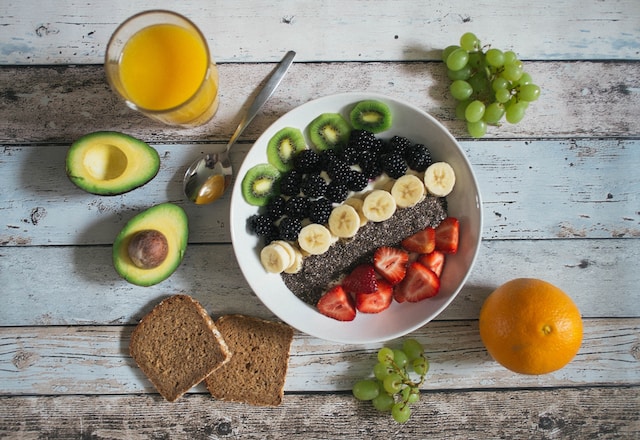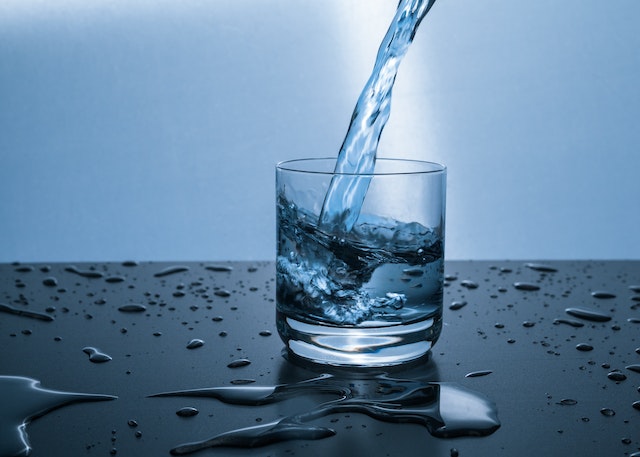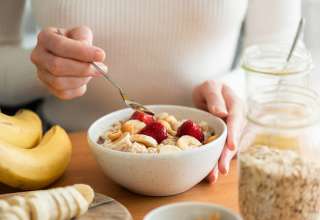
In today’s fast-paced society, keeping a healthy weight is harder than ever. The market is flooded with diet plans and supplements promising rapid weight loss. Some of them claim to work immediately. In spite of this, many of these initiatives cannot be maintained indefinitely. Most diet pills have undesirable consequences. Increasing your fiber is one of the most effective and all-natural methods for reducing your body fat percentage. The high-quality fiber in the diet is crucial. A healthy digestive relies heavily on it. The use of fiber can aid in the avoidance of chronic illness. So, you can start taking fiber for weight loss from today.
In this article, you will find information about weight loss. We will share some tips that can help you to lose weight. We also tell you about the relationship between fiber and weight loss. If you are worried about your weight, This article will help you in losing weight.
What is Fiber?

Fiber is a type of carbohydrate. We can find it in plant foods. Fruits, vegetables, cereals, nuts, and seeds are a few examples. Unlike other types of carbohydrates, fiber cannot be broken down by the digestive enzymes in our bodies. Instead, it mostly remains intact as it moves through the digestive system. It offers a number of advantages.
Types of Fiber
Soluble fiber and insoluble fiber are the two types of dietary fiber. Soluble fiber dissolves in water and then changes into a gel-like substance in the digestive tract. It can control blood sugar levels and decrease cholesterol. Insoluble fibers, on the other hand, do not dissolve in water and add bulk to the stool. It helps to promote regular bowel movements.
Here, we will know what soluble fiber and insoluble fiber are:
Soluble Fiber
Soluble fiber is a type of dietary fiber. It dissolves in water and congeals in the digestive system to produce a gel-like material. The bacteria ferment it in the colon. Soluble fiber produces short-chain fatty acids. That is important for maintaining good gut health.
Sources of soluble fibers
Soluble fibers are found in many plant foods, including:
- Oats and oat bran
- Barley
- Legumes (beans, lentils, chickpeas)
- Apples
- Citrus fruits (oranges, grapefruit)
- Berries (raspberries, strawberries)
- Vegetables (carrots, broccoli)
Insoluble Fiber
A form of fiber known as insoluble fiber does not dissolve in water. It adds bulk to the stool. It promotes regular bowel movements. That helps to prevent constipation and other digestive disorders.
Sources of insoluble fibers
Insoluble fibers are found in many plant-based foods, including:
- Whole grains (brown rice, quinoa, whole wheat)
- Nuts and seeds (chia seeds, almonds)
- Vegetables (cabbage, celery, green beans)
- Fruits (bananas, grapes, kiwi)
- Legumes (peas, soybeans)
Importance of Fiber for Weight Loss
Incorporating high fiber foods into your diet can be an effective strategy for weight loss. Here are some reasons why this is important for weight loss:
Promotes feelings of fullness
Foods with more fiber tend to be more satiating than those with less fiber. You may end up consuming fewer calories altogether. When you eat fiber-rich foods, they absorb water and expand in the stomach. As a result, it triggers signals to the brain that you are full and reduces your appetite.
Slows down digestion
Since digestive enzymes cannot break down the fiber in our bodies, it takes longer to pass through the digestive system. Blood sugar levels may be regulated by this gradual digestive process. It also prevents insulin spikes. Additionally, it lessens the desire for fatty and sugary foods.
Lowers calorie intake
High fiber foodstuffs tend to be lower in calories than processed and high-fat foods. Adding more fiber to your foods can reduce your overall calorie intake without feeling hungry.
Increases metabolism
Some studies suggest that consuming fiber can increase the body’s metabolic rate. That can help burn more calories and aid in weight loss.
High Fiber Foods

Here are a few examples of foods high in fiber:
Fruits
- Apples
- Bananas
- Berries (raspberries, blackberries, strawberries)
- Oranges
- Pears
- Avocados
- Kiwi
Vegetables
- Broccoli
- Carrots
- Spinach
- Brussels sprouts
- Sweet potatoes
- Cauliflower
- Artichokes
Legumes
- Lentils
- Chickpeas
- Black beans
- Kidney beans
- Peas
- Lima beans
Nuts and Seeds
- Almonds
- Chia seeds
- Flaxseeds
- Pistachios
- Pumpkin seeds
- Sunflower seeds
Whole Grains
- Oats
- Brown rice
- Quinoa
- Barley
- Whole wheat bread
- Whole grain pasta
Other
- Popcorn
- Dark chocolate
- Coconut meat
- Edamame
Foods that Need to Avoid
While there are no “bad” foods, some are more conducive to weight loss than others. Here are some foods that you may want to avoid or limit if you are trying to lose weight:
- Sugary drinks
- Processed snacks
- Fried foods
- White bread and pasta
- High-fat dairy products
- Highly processed meats
How Much Fiber Should You Take to lose Weight
We can’t function without fiber. This supports a healthy digestive. Consuming foods high in fiber might help you feel full longer and shed unwanted pounds. However, how much fiber you need to consume to achieve weight loss varies from person to person. This includes things like age, sex, weight, exercise level, and general health.
Adults should aim to take 25-30 grams of fiber for weight loss per day, according to the American Heart Association. Some research, however, recommends a daily intake of 30–40 grams. This strategy for weight loss may be more efficient.
High Fiber Diet Tips
Fiber is an essential nutrient. It is essential for preserving a sound digestive system. However, most people don’t consume enough fiber in their daily diet. Incorporating more fiber into your diet can be challenging, but it’s a crucial step toward improving your overall health. Here are some tips to help you increase your fiber intake. Besides it, you can ask your friends and family about weight loss tips. It will help you to maintain a balanced diet.
Start slow and gradually increase fiber intake
It’s essential to start slow and gradually increase your fiber intake. This allows your body to adjust to the increased fiber intake. It helps to avoid digestive discomforts like bloating, gas, and constipation. Begin by adding a serving of high fiber food to your diet. For example, whole-grain bread, oatmeal, or fruits and vegetables. Gradually increase your intake over a few weeks.
Drink plenty of water

Fiber absorbs water as it passes through your digestive process. It’s essential to drink water when consuming high-fiber foods. Drinking enough water can help prevent constipation and help you to weight control. It ensures that your digestive process is functioning correctly. Eight glasses of water per day is the typical recommendation. It may vary depending on your body weight, activity level, and climate.
Choose whole, unprocessed foods
The finest sources of fiber are whole, unprocessed foods. Foods like fruits, vegetables, whole grains, nuts, and seeds are all excellent sources of fiber. Choosing plant foods over processed foods can help you increase your fiber intake. Additionally, it gives your body important vitamins and nutrients.
Read food labels carefully
When shopping for food, it’s essential to read the labels carefully to determine the fiber content of a product. Look for foods that are high in fiber and low in added sugars, salt, and fat. You can also use apps and websites that calculate the fiber content of different foods.
Consider taking fiber supplements
If you’re struggling to consume enough fiber through your diet alone, consider taking fiber supplements. Fiber supplements are available in various forms. For example, powders, capsules, and gummies. You can use these to fulfill your daily fiber needs. Before ingesting any supplements, you must consult your physician. It will ensure that they’re safe and effective for you.
Health Benefits of High Fiber Diets
A high fiber diet has numerous health benefits beyond weight management. Adding more fiber can help you to lose weight. However, here are some of the top health benefits of a high fiber diet:
Promotes digestive health
Fiber adds bulk to your stool and helps promote regular bowel movements. That can help prevent constipation, hemorrhoids, and other digestive issues.
Lowers cholesterol levels
It has been demonstrated that soluble fiber lowers LDL (bad) cholesterol levels. Heart disease and stroke risk can be decreased by it.
Controls blood sugar levels
Fiber slows the rate of bloodstream absorption of sugar. It can lower the risk of type 2 diabetes and assist in controlling blood sugar levels.
Reduces the risk of certain cancers
A high fiber diet has been linked to a reduced risk of colorectal cancer and other types of cancer. It has the ability to promote bowel regularity and reduce inflammation.
Improves satiety and weight management
High fiber meals take longer to digest. This may prolong your feeling of fullness and lower your overall calorie intake. It promotes weight loss and weight control.
Enhances gut microbiome
Fiber is an important fuel source for the beneficial bacteria in your gut. That can help improve immune function, reduce inflammation, and promote overall health.
Lowers risk of cardiovascular disease
A high fiber diet can lower blood pressure, improve lipid profiles, and reduce inflammation. All of that are important risk factors for this type of disease.
Side Effects of High Fiber Diets
Even while a diet high in fiber has many positive health impacts, increasing fiber consumption too soon might cause some digestive discomfort as well as other negative effects. Typical negative effects of high-fiber diets include the following:
unpleasant digestion
Bloating, gas, diarrhea, and constipation can result from consuming too much fiber too rapidly. It’s vital to gradually increase your consumption of fiber. To assist your body in adjusting, drink plenty of water.
Lack of nutrients
Diets containing a lot of fiber may prevent some nutrients from being absorbed. Calcium, iron, and zinc are a few examples. It’s crucial to eat a range of nutrient-dense foods. If you need more vitamins or minerals, think about taking a supplement.
Dehydration
Fiber takes up water. When increasing your fiber consumption, it’s crucial to drink lots of water to avoid dehydration.
Medications being affected
The absorption of several drugs can be hampered by fiber. Antibiotics and blood thinners are two examples. Before making any significant adjustments to your fiber intake if you take medication, consult your doctor.
Reactions to allergens
Rarely, some individuals may react allergically to particular fiber types. For example, inulin or psyllium.
Conclusion
Taking fiber to lose weight is work and it can help you in eating less calories. Fiber filled foods can help you to protect from various diseases. By incorporating more high-fiber items into your diet, you can experience a range of benefits. That includes improved digestion, lower cholesterol levels, better blood sugar control, and more.
While increasing your fiber, it’s important to do so gradually and drink water. It will help to prevent digestive discomfort and other side effects. Remember that fiber is just one component of a healthy diet and lifestyle. It’s important to make overall healthy choices to achieve and maintain a sound weight.












